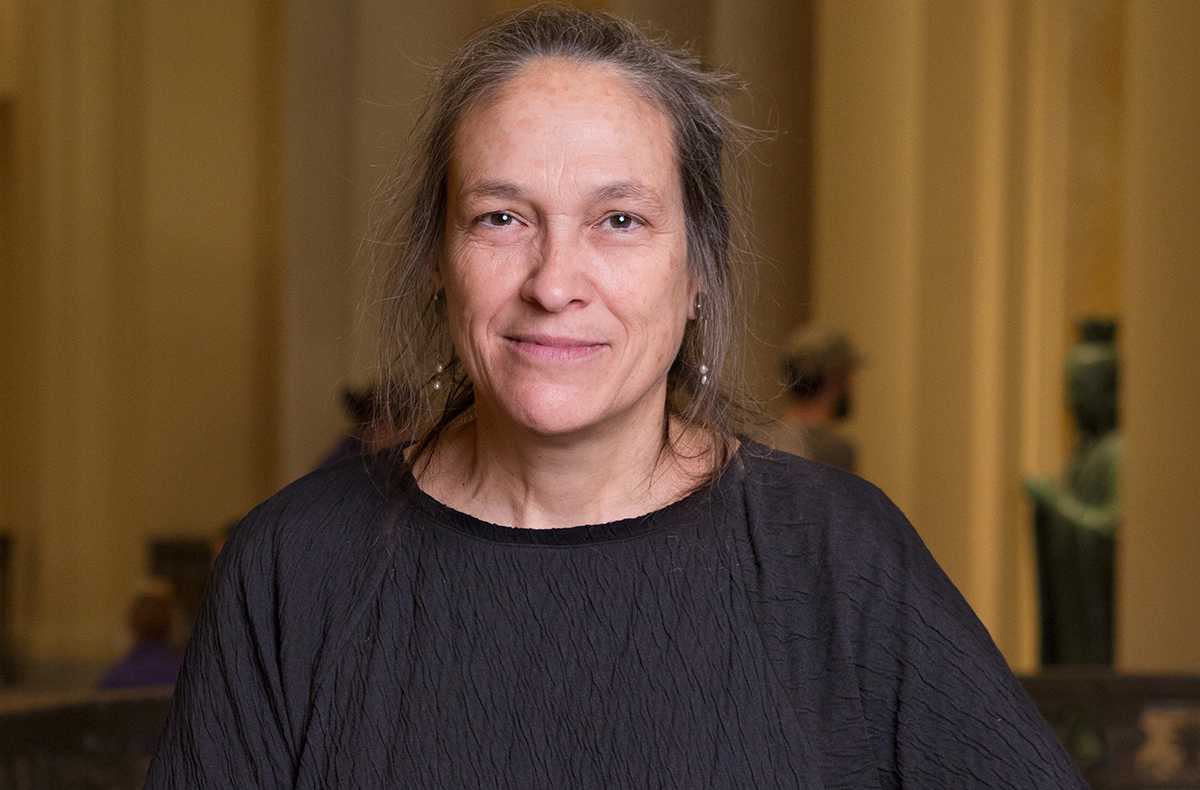Marilyn Arsem Will Spend Six Hours a Day for 100 Days at the MFA

Photo courtesy of the Museum of Fine Arts, Boston
For the first time in its history, the Museum of Fine Arts is dedicating an entire—albeit small—gallery exclusively to a performance art exhibition.
Starting on Monday, November 9, local artist Marilyn Arsem will spend six hours a day, every day for 100 days, inside the gallery, carrying out her lengthiest performance ever, titled “100 Ways to Consider Time.”
Here’s the catch: Nobody—not even Arsem herself—knows exactly what she’ll do.
At the most basic level, the performance will consist of Arsem creating minimal, slow-paced actions—pushing a glass of water across a table, for example—that will drive a reflection on the passage of time both for herself and the audience. But the details—what exactly the actions are, if she can repeat them, if she’ll engage people in the gallery—have not been planned out.
“It’s going to change over time, and I don’t know how it’s going to change. That’s part of the reason for doing it—to discover what happens,” said the artist in a phone interview. “I’m not trying to come up with 100 things right now. I’m much more interested to see what I learn in one day, and how it dictates the question for the next day.”
Liz Munsell, the MFA’s assistant curator of contemporary art, admits that the performance is an extremely abstract piece of work—but one that needs to be shown in an institution that has historically shied away from performance art.
“We are in for some surprises, as is the nature of performance art,” she said. “As a visual arts museum, we’re responsible for making it part of people’s vocabulary.”
Arsem, the 2015 winner of the MFA’s Maud Morgan Prize, given biennially to a female artist from Massachusetts who’s made a significant contribution to the contemporary arts landscape, is the first performance artist in the museum’s history to receive the prestigious honor.
“Having the opportunity to integrate performance art into the fiber of the museum has opened so many doors to types of art practices that were previously excluded and to people who were previously excluded,” said Munsell. “I personally am really excited to be covering some ground in the visual arts that we haven’t before as an institution.”
Arsem, who graduated from Boston University and founded Mobius, a Boston-area collective of interdisciplinary artists, has been staging performance art pieces since the 1970s, presenting works all over the world, including North and South America, Europe, the Middle East, and Asia. She taught at the School of the Museum of Fine Arts for 27 years, but it wasn’t until 2013 when the school’s affiliated museum approached her about contributing a work.
“It’s an old museum with an amazing collection, much of it gathered in the 19th century and into the early 20th century,” said Arsem. “Performance art didn’t particularly fit into an order—it’s not an art form that was recognized in the 19th century or earlier. It was really lovely when [the MFA] started including that in the programming.”
It was Munsell who invited Arsem to participate in “Odd Spaces,” a one-day exhibition that allowed performance artists to take over various parts of the museum—places where art wouldn’t typically be expected to appear. For her contribution, titled “With the Others,” Arsem lay under a bench in the Egyptian galleries, silent and still, invisible to most visitors except for the scent of jasmine, which she had brought along, lingering in the air.
Similar elements will be present in “100 Ways to Consider Time.” Arsem will use her own body as a primary tool, and benches will be set up in the gallery, but they’ll serve a different purpose—to invite the audience to stay and watch.
“We really hope that people will feel comfortable there,” said Munsell. “The amazing thing about performance art is that it’s totally open to the level of energy that’s in the room. Maybe it’ll be incredibly silent at times, and then maybe a school group will come and completely shake the place up.”
Arsem hopes that people will come out more than once and share their reflections. Throughout the exhibition, the MFA will be collecting people’s thoughts on the performance through social media, email, and physical mail.
“Not everyone will want to stay with it, and that’s okay,” said the artist. “I also think that people will probably think about it afterwards as well. You absorb a lot during the day, and then you reflect on it later. I’m often curious about what rises to the surface.”
In addition to seeing Arsem perform live, people will also be able to browse a free e-book that chronicles select pieces from her career. At the end of her 100 days at the MFA, there will be an option to re-download the e-book with updated documentation of the most recent piece. As of now, Arsem doesn’t know what form that will take.
“I’m trying to keep it really open—open to where it takes me. I don’t have an end designed for this. I have a question, and I want to pursue this question,” she said. “The whole point of doing something this long is really the opportunity to see what happens, what the effect of time actually is.”
“Marilyn Arsem: 100 Ways to Consider Time” will be at the MFA from November 9 through February 19, 2016. For specific performance times, check mfa.org.


